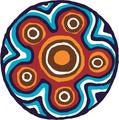Madarine Term 2 Overviews

| Year Level | Term 2 |
| Prep | In Term 2, Preps will embark on a journey to learn Chinese numbers from 1 to 10. They will be exposed to the stroke orders for each number character in writing. Additionally, students will delve into the significance of lucky and unlucky numbers in Chinese culture. Moreover, they will engage in exploring the story of the Dragon Boat Festival, uncovering its cultural significance to the Chinese people and comparing it to their own culture. |
| Grade 1 | In term 2, Grade 1 students will be introduced to the vocabulary for like and dislike as well as the sentence structures for "What fruit is this? This is... (fruit name)." Students will learn that in Chinese language we put "不" (bù) in front of a verb to negate a verb. They are also going to explore that in Mandarin the structure of a simple sentence is different from that of a simple question. Students are going to participate in interactive activities such as worksheets, multiple exposures, crafts and singing in the Mandarin class. |
| Grade 2 | In Term 2, Grade 2 students will learn to express dates in Mandarin, including the year, month, and date format, such as 2016/06/30. They will also explore constructing simple sentences to express their birthdays, such as 'wǒ de shēng rì shì...' (my birthday is...). Additionally, students will master singing the 'Happy Birthday' song in Mandarin and make a birthday handcraft. |
| Grade 3 | In term 2, Grade 3 students are going to extend their learning on family members and use measure words to address different family members such as "我有一个哥哥。"(I have an older brother). In this unit, students learn to introduce members of their family, including the number of family members making up the family unit. They will also familiarise themselves with the use of Pinyin and some common Chinese characters, such as "我", "有" and "家人", in the writing system. |
| Grade 4 | In term 2, students are going to extended their learning on family members and use measure words to address different family members such as 我有一个姐姐 (I have a big sister)。Students learn to introduce some hobbies of self and others in this Unit. They will be familirise using the words in Pinyin or Chinese characters in the writing system. By the end of the term students introduces hobbies of self and others such as 我喜欢看书 (I like to read),姐姐喜欢跑步 (Older sister likes to run). |
| Grade 5 | In term 2, students are going to create a weekday timetable integrated with clues and Chinese time-telling presents an enriching and interactive learning opportunity! The provided template furnishes a framework for students to engage with, encouraging them to decipher clues like time indications in Chinese characters and corresponding class subjects. Tailoring the activity to accommodate varying levels of Chinese proficiency and familiarity with timetable creation ensures an inclusive and stimulating learning experience for all students. |
| Grade 6 | In term 2, students are reading an imaginary text titled "去书店 Going to the bookstore", students comparing the use of tenses in English and Chinese, for example, how future tense is often expressed through time phrases in Chinese. Students equiped with the skill to ask and asnwer the question in different ways "现在几点/现在什么时间?What time is it now?” "现在十点。 It is ten o'clock now." Students also learn to tell direction how to go to a book store in the city, such as ”往前走,就是书店了。Head straight, the book store is right there." |
| Year 7 | In term 2, Year 7 students will learn how to provide a detailed description of someone's physical appearance. This will involve acquiring new vocabulary words like "眼睛" (eye), "鼻子" (nose), "皮肤" (skin), and "刘海" (bangs). They will also study adjectives such as "大" (big), "小" (small), "高" (tall), "矮" (short), "尖尖的" (pointed), and "圆圆的" (round), as well as measure words like "个", "只", "条", and "张". Furthermore, students will be taught how to describe colors. To describe someone's physical features, they will use the sentence structure: "他有黑色的大眼睛" (He has big black eyes), where "他" is a personal pronoun, "黑色" is the color, "大" is the adjective, and "眼睛" is the body part. |
| Year 8 | In term 2, Year 8 students will learn vocabularies about Chinese cuisine, such as Chinese names of vigetables (西兰花、西红柿、土豆、胡萝卜、蘑菇、青椒、青菜、豆腐), meats (牛肉、猪肉、鸡肉、羊肉、鸭肉、鱼、虾), ingridents (葱、姜、蒜、酱油、盐、油、蚝油、料酒、糖、辣椒、花椒), measure words (一勺、一克、一个、一根、一把、一块, 一片 ), and cooking methods ( 炸、炒、蒸、煮、煎). Students will be introduced to Chinese dish recipes and menus; they also need to create a detailed recipe and design a Chinese menu for a restaurant. Students will use 把 sentences to instruct cooking, like 把西红柿和鸡蛋放进锅里。 Students will generate role-play dialogues of dining experiences in a restaurant by using sentences like 你好, 我想点一份西红柿炒鸡蛋。 |
| Year 9 | In term 2, Year 9 students are tasked with describing their home and its layout in Mandarin. The curriculum will cover essential vocabulary related to rooms (such as the bathroom, bedroom, study, living room, dining room, laundry room, kitchen, and garage 浴室、睡房、书房、客厅、饭厅、洗衣房、厨房、车库), household items (such as backpacks, clothing, phones, televisions, cars, computers, bathtubs, refrigerators, dining tables, sofas, beds, and chairs 书包、衣服、电话、电视机、车、电脑、浴缸、冰箱、饭桌、沙发、床、椅子), and positions (including above, below, left, right, and beside 上面、下边、左边、右边、旁边). To express themselves, students will use cohesive words like "and" and "but" to create longer, more complex sentences. Additionally, they will learn a new sentence pattern, "把," which they can apply in various contexts. |
